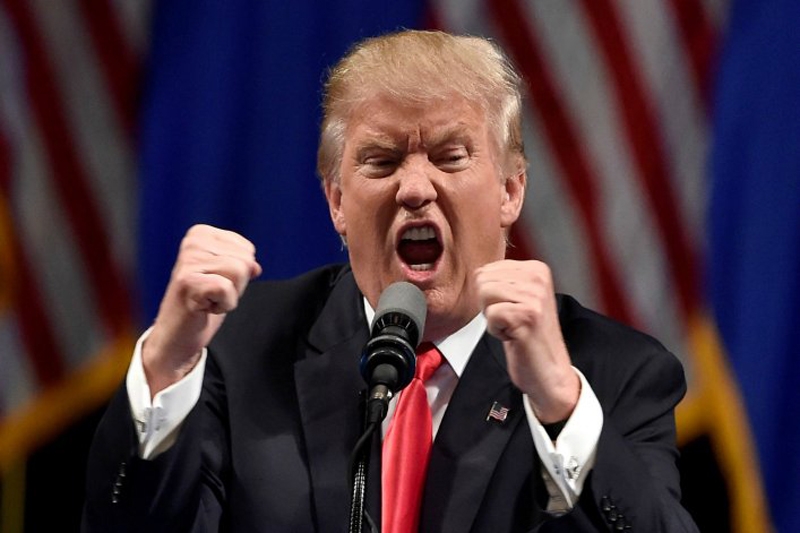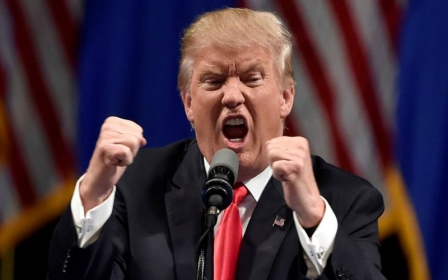Pentagon to give Donald Trump new Middle East military options

He wants to step up the bombing of the Islamic State (IS) group and has slammed White House micro-management of US generals, but president-elect Donald Trump has offered few specifics about what his Pentagon will look like.
While Obama administration officials, who cede control of US foreign policy at noon on Friday, say they did everything possible to destroy IS, senior military commanders are drawing up fresh plans.
These could potentially see more US troops being sent to the Middle East and have the Pentagon taking a more aggressive stance in other key areas, which include countering growing Iranian regional influence.
During his campaign, Trump said he would "bomb the s**t" out of IS and claimed to have a secret plan to quickly defeat the group.
He gave no details, but later said he will convene his top generals and "give them a simple instruction: They will have 30 days to submit to the Oval Office a plan for defeating" IS.
An early indication of a break from Obama's policy came last week at the confirmation hearing for incoming Pentagon chief James Mattis, a retired Marine general who has garnered broad cross-party support and will likely be one of the first of Trump's cabinet to be sworn in.
The US Senate Armed Services Committee voted overwhelmingly on Wednesday to recommend Mattis for secretary of defence, paving the way for his appointment.
The committee voted 26-1 to back Mattis's nomination. The full Senate will vote on Trump’s nominations after he is sworn in as president.
The identity of the senator who voted against Mattis was not immediately available.
Congress cleared the way for quick confirmation of Mattis last week by backing a waiver that would allow him to lead the Pentagon despite retiring from active duty as a Marine general only in 2013.
The use of Kurdish forces
One key question for Trump’s Middle East foreign policy is whether the US will arm Syrian Kurdish forces to lead the fight - a move sure to infuriate ally Turkey, which considers the Kurdish fighters terrorists - or whether it should send in more combat troops.
A US defence official, speaking on condition of anonymity, told AFP that senior planners are readying a series of options for the president and Mattis to weigh.
"If the proper resources - including arms - cannot be distributed to the partners who are actually going to fight going into and around Raqqa, then another option would be to put coalition or US folks somewhere on the ground to be able to leverage that kind of combat power or direction of combat resources," the official said.
'If the proper resources - including arms - cannot be distributed to the partners who are actually going to fight going into and around Raqqa, then another option would be to put coalition or US folks somewhere on the ground'
Potential Syria plans could include adding one or more US fighting brigade, each of which has thousands of troops.
Currently, only about 500 US troops are in Syria, mostly special operations forces working behind the front lines to train local Kurdish and Syrian Arab fighters.
"Having more US troops would be one way that you can offset not having the ability to properly arm and resource the [local forces], that would be an option," the official said.
General Joe Dunford, chairman of the Joint Chiefs of Staff, said on Wednesday he would present Mattis with options to "accelerate the campaign" against IS.
"What is really important is first that we have a conversation about what we are doing today, why we are doing it, and what other things might be done and why we haven't done it to date," Dunford told reporters in Brussels.
Because Obama was elected in 2008 on the promise of ending US conflicts in the Middle East, he has been loath to put US forces in combat and has insisted on oversight of even minor strategic tweaks.
'Having more US troops would be one way that you can offset not having the ability to properly arm and resource the [local forces]'
Trump, on the other hand, is a business executive accustomed to delegating, so he may grant Mattis greater autonomy.
The anti-IS campaign began in earnest in August 2014 and has seen a US-led coalition pummel targets across Iraq and Syria.
Some military officials privately voice frustration over the piecemeal nature of the effort, with every new "accelerant" and additional troop deployment needing presidential approval.
Commanders say they worry as much about selling policies in Washington as they do actually fighting the war.
"There are active requests for different authorities that are unresolved on Inauguration Day that the new administration will have an opportunity to look at," the official said.
In an interview with USA Today, Air Force Chief of Staff General David Goldfein said military chiefs are readying options that would grant commanders greater authority to use secret cyber-warfare and space weapons.
Hawkish on Iran
Mattis is hawkish on Iran and has publicly called it the "single most belligerent actor in the Middle East".
Iranian gunboats frequently shadow US destroyers in the Persian Gulf and buzz dangerously close to the ships.
The official said that the United States could take a more assertive stance against Iranian influence, including a more systematic checking of maritime traffic for hidden Iranian arms shipments.
Mattis and Trump must also address China's South China Sea military aspirations, decide what to do about the North Korean missile programme and, pressingly, somehow deal with Russia.
Trump had signalled a rapprochement with President Vladimir Putin, but Mattis accuses Russia of trying to break up NATO and has said the United States needs to stand up to its old foe.
Middle East Eye propose une couverture et une analyse indépendantes et incomparables du Moyen-Orient, de l’Afrique du Nord et d’autres régions du monde. Pour en savoir plus sur la reprise de ce contenu et les frais qui s’appliquent, veuillez remplir ce formulaire [en anglais]. Pour en savoir plus sur MEE, cliquez ici [en anglais].




